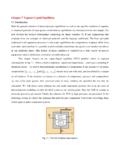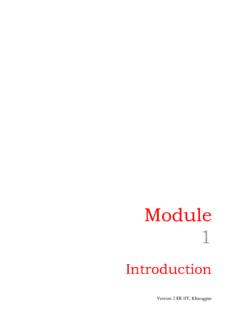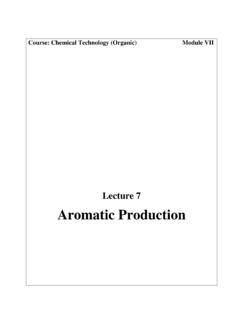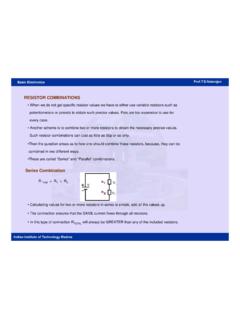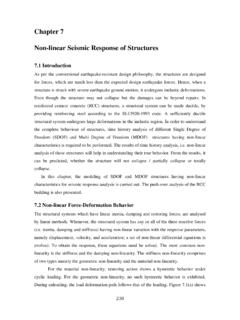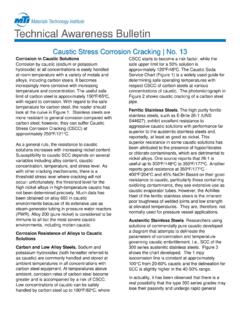Transcription of Lecture 1 Corrosion: Introduction Definitions and Types
1 Lecture 1: corrosion : Introduction Definitions and Types NPTEL Web Course 1 Course Title: Advances in corrosion Engineering Course Co-ordinator: Prof. K. A. Natarajan, IISc Bangalore Lecture 1 corrosion : Introduction Definitions and Types Keywords: Definition of corrosion , corrosion Types , Environment. corrosion can be viewed as a universal phenomenon, omnipresent and omnipotent. It is there everywhere, air, water, soil and in every environment, we encounter.
2 There is no single figure for loss to the nation due to corrosion . It can be a minimum of of the nation s GDP. Losses due to corrosion could be around Rs. lakh crores per annum in India. corrosion costs manifest in the form of premature deterioration or failure necessitating maintenance, repairs and replacement of damaged parts. In the US, total direct cost of corrosion is estimated at about 300 billion dollars per year; which is about of domestic product. corrosion has a huge economic and environmental impact on all facets of national infrastructure; from highways, bridges, buildings, oil and gas, chemical processing, water and waste water treatment and virtually on all metallic objects in use.
3 Other than material loss, corrosion interferes with human safety, disrupts industrial operations and poses danger to environment. Awareness to corrosion and adaptation of timely and appropriate control measures hold the key in the abatement of corrosion failures. Definitions : corrosion is the deterioration or destruction of metals and alloys in the presence of an environment by chemical or electrochemical means. In simple terminology, corrosion processes involve reaction of metals with environmental species.
4 Lecture 1: corrosion : Introduction Definitions and Types NPTEL Web Course 2 Course Title: Advances in corrosion Engineering Course Co-ordinator: Prof. K. A. Natarajan, IISc Bangalore As per IUPAC, corrosion is an irreversible interfacial reaction of a material (metal, ceramic, polymer) with its environment which results in its consumption or dissolution into the material of a component of the environment. Often, but not necessarily, corrosion results in effects detrimental to the usage of the material considered.
5 Exclusively physical or mechanical processes such as melting and evaporation, abrasion or mechanical fracture are not included in the term corrosion With the knowledge of the role of various microorganisms present in soil and water bodies, the definition for corrosion need be further widened to include microbially-influenced factors. corrosion can be classified in different ways, such as Chemical and electrochemical High temperature and low temperature Wet corrosion and dry corrosion .
6 Dry corrosion occurs in the absence of aqueous environment, usually in the presence of gases and vapours, mainly at high temperatures. Electrochemical nature of corrosion can be understood by examining zinc dissolution in dilute hydrochloric acid. Zn + 2 HCl = ZnCl2 + H2 Anodic reaction is Zn = Zn++ + 2e with the reduction of 2H+ + 2e = H2 at cathodic areas on the surface of zinc metal. There are two half reactions constituting the net cell reaction. Environmental effects such as those of presence of oxygen and other oxidizers, changes in flow rates (velocity), temperature, reactant concentrations and pH would influence rates of anodic and cathodic reactions.
7 Lecture 1: corrosion : Introduction Definitions and Types NPTEL Web Course 3 Course Title: Advances in corrosion Engineering Course Co-ordinator: Prof. K. A. Natarajan, IISc Bangalore Even though the fundamental mechanism of corrosion involves creation or existence of corrosion cells, there are several Types or forms of corrosion that can occur. It should however be borne in mind that for corrosion to occur, there is no need for discrete (physically independent) anodes and cathodes.
8 Innumerable micro level anodic and cathodic areas can be generated at the same (single) surface on which anodic ( corrosion ) and cathodic (reduction) reactions occur. Each form of corrosion has a specific arrangement of anodes and cathodes and specific patterns and locations depending on the type can exist. The most important Types are Uniform corrosion . Galvanic corrosion , concentration cells, water line attack Pitting. Dezincification, Dealloying (selective leaching) Atmospheric corrosion .
9 Erosion corrosion Fretting Crevice corrosion ; cavitation stress corrosion , intergranular and transgranular corrosion , hydrogen cracking and embrittlement corrosion fatigue. Lecture 1: corrosion : Introduction Definitions and Types NPTEL Web Course 4 Course Title: Advances in corrosion Engineering Course Co-ordinator: Prof. K. A. Natarajan, IISc Bangalore Table ASM classifications of corrosion Types General corrosion : Localized corrosion : Metallurgically Influenced corrosion : Mechanically Assisted Degradation: Environmentally Induced cracking .
10 Corrosive attack dominated by uniform thinning Atmospheric corrosion Galvanic corrosion Stray-current corrosion General biological corrosion Molten salt corrosion corrosion in liquid metals High temperature corrosion High rates of metal penetration at specific sites Crevice corrosion Filiform corrosion Pitting corrosion Localized biological corrosion Affected by alloy chemistry & heat treatment Intergranular corrosion Dealloying corrosion corrosion with a mechanical component Erosion corrosion Fretting corrosion Cavitation and water drop impingement corrosion fatigue cracking produced by corrosion , in the presence of stress .
